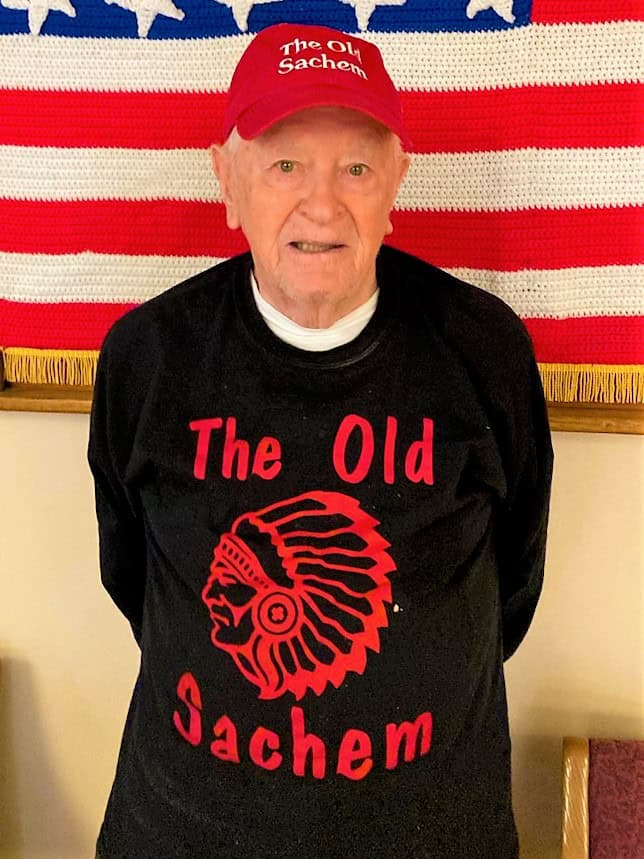By Bill Stewart
Queen Anne’s War, like the previous King William’s War, was fought both in the colonies and in Europe. It was the third war for the colonists. The war was from 1702 to 1713.
The Massachusetts Bay colonists once again wanted to claim Acadia, but the French still resisted along with their partners, the Wabanaki Confederacy. New France had the border of the Kennebec River in southern Maine. Michel Leneuf de la Vallière de Beaubassin commanded a small French-Canadian force and about 500 Indian forces of the Wabanaki Confederacy. They attacked New England settlements in the area of southern Maine, which at the time was part of Massachusetts.
In February 1704, Jean-Baptiste Hertel de Rouville led a force of 50 French Canadians and 250 Abenaki and Caughnawaga Indians in a raid at Deerfield in Massachusetts. They destroyed the settlement and killed most of the colonists and captured the remaining people, which they took on an overland journey hundreds of miles north to just south of Montreal. In August there was a raid in what is now Westborough and captives were also taken to the Caughnawaga. A slave trade developed over the captives, and communities raised funds to return colonists.
A priest, Father Sebastian Rale, incited the Norridgewock Indians against the Massachusetts colonists, and the Governor, Joseph Dudley, put a price on the priest’s head. He sent 250 militiamen in the winter of 1705 under the command of Colonel Winthrop Hilton to seize Rale and sack the village. Raids by the Indians continued until the end of the war.
In May of 1707, Governor Dudley placed forces under John Marsh to attack Port Royal twice, failing both times. The French and Indian forces raided the town of Haverhill. In October 1710, 3,500 British and colonial forces led by Francis Nicholson finally captured Port Royal, which drove the French from Acadia, which is now known as eastern Maine and New Brunswick. The Battle of Bloody Creek in 1711 against the Wabanaki by the British and colonists pushed the Indians farther north. The French were against attacking the New York northwestern area because they feared the Iroquois, who maintained neutrality throughout the conflict.
Nicholson and Peter Schuyler traveled to London along with Indian sachems led by Mohawk King Hendrick. The Indians were a sensation in London and Queen Anne granted an audience to the group.
In 1711 the British and colonists had land and sea attacks against the French that again were unsuccessful. In 1712 Britain and France declared an armistice and a peace agreement was settled in 1713 and named Treaty of Utrecht, in which Britain won Acadia, which they named Nova Scotia. The treaty also ceded to Britain Newfoundland, the Hudson Bay region and the Caribbean Island of St. Kitts.
The Abenakis tired of the conflicts and wanted a peace with Massachusetts colonists. The Governor organized a peace conference at Portsmouth, New Hampshire. The Abenakis were not happy with the colonists’ acquisitions of Maine and New Brunswick, but they eventually agreed to boundaries of the Kennebec River. Massachusetts and New Hampshire were on the frontline of the war but suffered less economic damage than other areas.
The economic costs of the war were high in the southern English colonies. Virginia, Maryland and Pennsylvania suffered the costs of shipping of their products, primarily tobacco. South Carolina Colony accumulated significant debt in finance of military operations.
The colonies were looking to their independence after the war and eventually were successful. Britain was satisfied with the area that became known as Canada. You probably never heard of these wars – King Philip’s, King William’s and Queen Anne’s – but they contributed to the colonies’ welfare.
(Editor’s Note: Bill Stewart, who is better known to Saugus Advocate readers as “The Old Sachem,” writes a weekly column – sometimes about sports. He also opines on current or historical events or famous people.)


